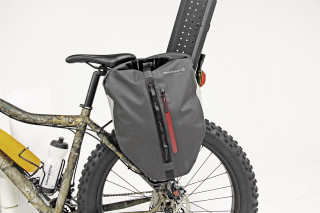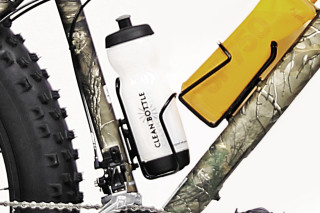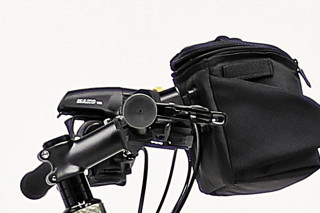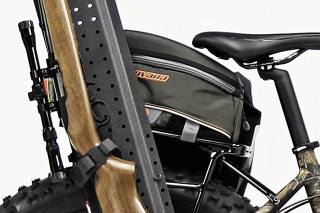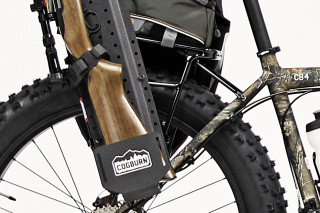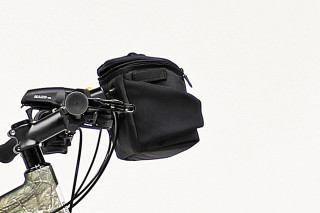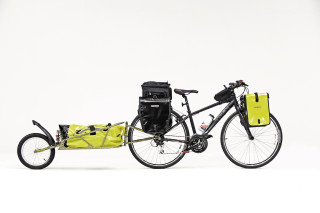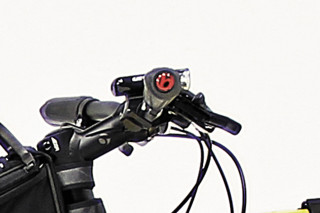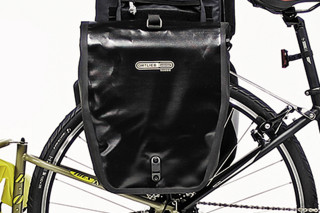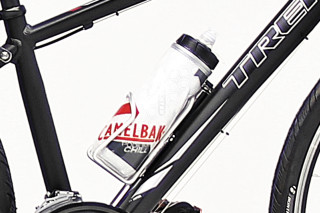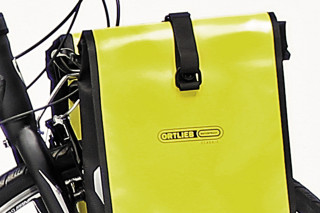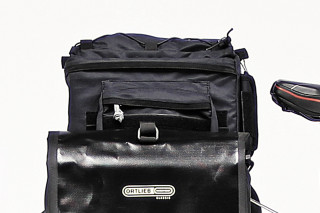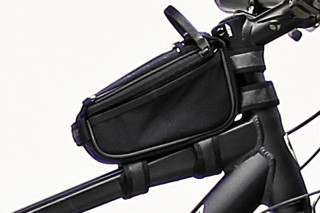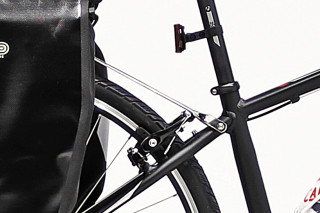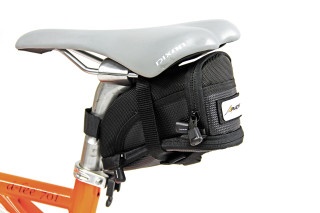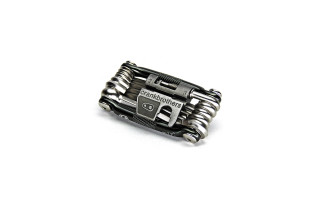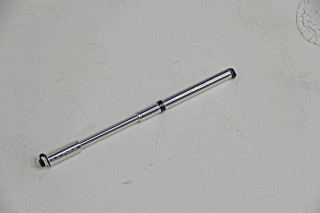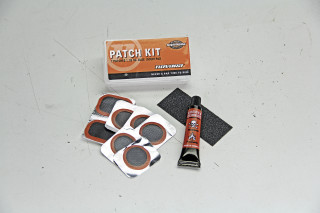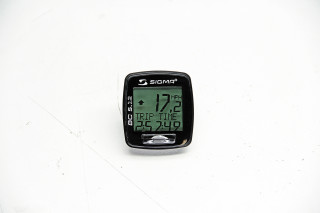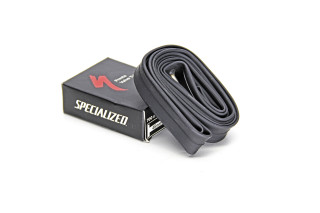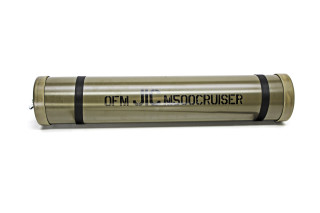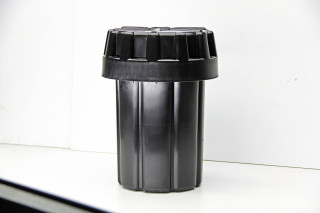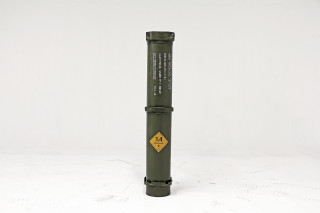In This Article
Retaining mobility when a disaster on a grand scale strikes your town can be as, or even more important, than plans to stock up supplies and bunker down at home. When things are good, getting in, out, and around town is as easy as jumping in your transportation mode of choice — be it a car, truck, motorcycle, or even subway or bus — and simply going from point A to point B. But when roads are clogged, fuel is scarce, and the city’s infrastructure is in disarray, moving about could get mighty tricky.
The most reliable mode of transportation is your feet. You can use them to traverse a multitude of terrain, and they require no additional forms of fuel other than what you already need to sustain your life. If your vehicle is rendered useless or the streets around you become impassable for some disastrous reason, you can probably still hike yourself out if need be. But relying on your feet to get you and your gear across long distances is a surefire way to turn them into hamburger meat. Because we like our feet the way there are, let’s explore another human-powered alternative.
The bicycle runs on the same power as your feet, meaning that you don’t need additional fuel to power it. Bicycles allow you to travel great distances more efficiently and allow you to be on the move quicker with heavier loads, while using less energy and having less impact on your body than if you were to go on foot. If there is a need to keep a low profile, which might often be the case, bicycles are a lot quieter than most motorized vehicles.
When properly equipped, the right bicycle can take you and your heavy survival gear, or possibly another passenger, over a number of types of terrain. If shit hits the fan while you are at work, a prepositioned bike could get you home faster than waiting for the roads to clear up. On the other hand, if you’re bugging in and waiting it out in your prepared fortress, bicycles are a great way to scout the area rapidly and quietly while having a viable way to bring supplies back to home base. With basic tools and a couple of spares, your bike can always bring you and your gear to safety.
Although there are some really nice bicycles out there, you don’t need to break the bank in order to get a two-wheeled escape plan going. There are plenty of used bikes you can pick up on the cheap from Goodwill, yard sales, Craigslist, pawn shops, and the like on which to base your silent escape rig. One of our staff members actually picked up a bike for $50 at a yard sale. He rigged his own carriers out of milk crates, scrap metal, and used backpacks to complete his get-out-of-town bike for less than $100. If you do pick up a used bike, make sure that it is inspected and serviced for safety at your local bike shop.
Like everything in life, what bike you get and how you set it up is all about what your individual needs are. Let’s take a look at a couple of differently outfitted bikes and their accessories to get an idea of how you can configure a bike to best suit your needs.
The All-Terrain Scout
This setup is based on the Cogburn CB4 bike. With its oversized 3.8-inch-wide tires, the CB4 is an all-terrain fat bike capable of taking on some seriously rough roads and torn-up asphalt. Built to fulfill an all-terrain scout role, we wanted a bike that could zip around city-center all the way to the outskirts of town regardless of road conditions. It is capable of carrying back foraged food and supplies with its bags and single pannier as well as providing the rider with some defense and hunting capabilities with its mounted rifle.
It’s equipped with disc brakes, wide track handle bars for confident control even with heavier loads, and pre-threaded attachment points all over the place for racks and carriers. We took advantage of those attachment points and added a few carriers and accessories that would help this bike fill a scout role.
The Pack-Mule
This alternative setup is focused on the transportation of gear and supplies. Think of it as a pickup truck or cargo van version of a bicycle, if you will. This bike is set up with multiple racks, bags, panniers, and even a trailer that allows it to carry large loads in the event you need to get out of your place. If you do find yourself in a position where you need to move someplace else — and depending on the overall situation, you will probably want to take as many supplies and equipment as you can with you.
We based this example on a non-current model TREK FX, which is considered a hybrid bike. Hybrids are great for long rides due to their more upright seating position. Like we mentioned earlier, many used road-worthy bikes can be outfitted in much the same way at a fraction of the cost of a brand-new bicycle.
Must-Have Accessories
Along with safety equipment such as gloves and a helmet for your noggin, we recommend taking a look at aftermarket seats if you don’t find yours comfortable to sit on for hours on end. Also, to keep your bicycle on the road, and you on the move, we highly recommend a few tools and accessories to keep packed on the bike.
Choosing a Bicycle
Bicycles come in all different flavors, as do their riders, intended terrain, carrying load, and distance to be ridden. Picking the right bicycle can be tricky — and writing about how to pick the right bicycle can be even trickier. This topic can quickly become a 100-page dissertation, but we only have the space inside this little box, so we’ll make it brief.
We are speaking in generalities here so you have a cursory idea of what to look for in a bike, but the experts at your local bicycle shop will be able to nail down the specifics of what bike will best fit your needs. Remember that fit is of upmost importance, so getting a bike that is the correct size for you along with being fitted to the proper seat height and handle bar adjustments is critical for riding comfort and efficiency.
Road Bikes
Good on pavement, road bikes are the sports cars of bicycles. They feature nimble handling, are built lighter, and are capable of greater speeds than other bikes when ridden on relatively smooth roads.
Hybrid Bikes
Hybrid bikes work well on everything from smooth pavement to gravel roads. They are generally built for comfort, ease of use, and sturdiness. Hybrids are heavier than typical road bikes, but feature heavier-duty wheels, wider tires, and a more comfortable upright-style seating position. Like mountain bikes, many hybrids offer front suspension options. We prefer this type of bike in urban settings to base a build around.
Mountain Bikes
Good on dirt and rocky roads, as well as rough roads with uneven pavement. Mountain bikes can be looked at as the Jeeps of the bike world. Many of them feature suspensions, some on the front only, and some with shocks front and back. If you are planning to ride on both soft surfaces such as dirt as well as pavement, a front suspension-only, or “hardtail” bike, is what you’ll want. The idea of having a suspension in front and back might sound appealing, but the shocks on a bike make pedaling inefficient on hard surfaces — reducing speed, making the bike heavier, and sometimes even compromising the number of gear attachment points. They are great for complete off-road riding, however, providing more rear-wheel traction.
Fat Bikes
Fat bikes hail from the snow banks of Alaska and the deserts of New Mexico. They are essentially mountain bikes built with wider frames so they can accommodate extremely wide rims and tires. These “fat” wheels allow fat bikes to traverse a large range of terrain effortlessly and feel very stable to ride.

